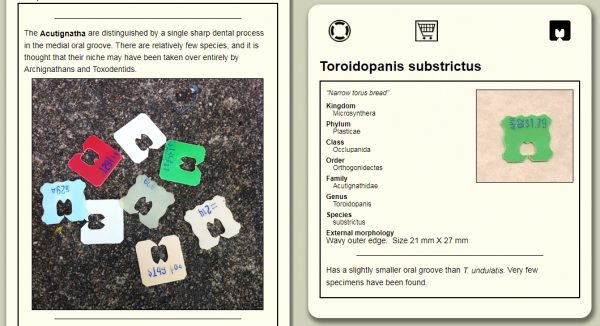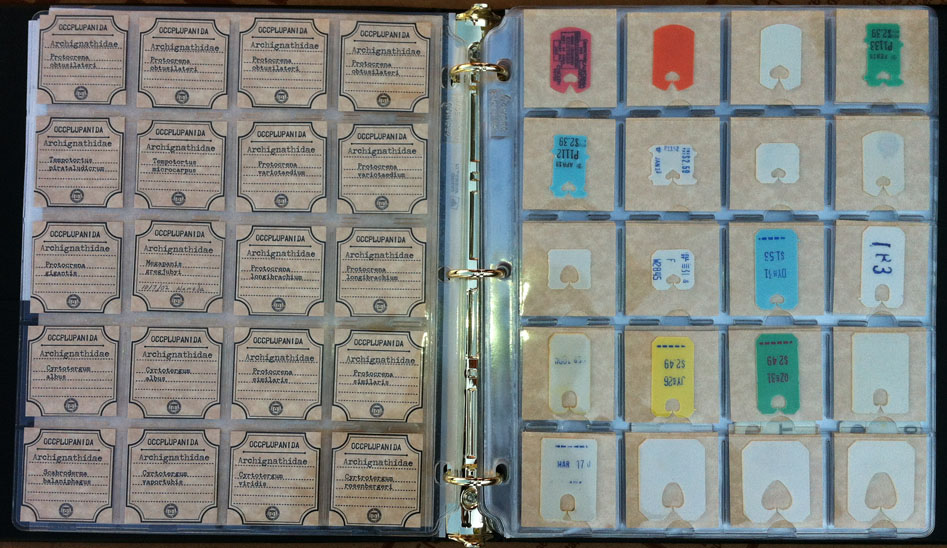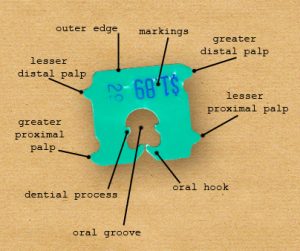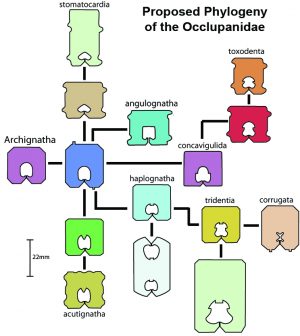Glimpsed in the bread aisles of a neighborhood supermarket, it would be all too easy to assume that all members of class Occlupanida (from: occlu: to close, and pan: bread) were functionally identical. The Holotypic Occlupanid Research Group (HORG), however, begs to differ.
HORG’s growing collection of plastic clips represents an impressive span of colors, shapes and sizes. This variety forms the basis for a meticulous and thorough occlupanid classification system.

HORG explains that occlupanids are members of the Microsynthera kingdom and Plasticae phylum. On their website, each specimen is further sub-categorized into an order and family. Descriptions, dimensions and photographs are provided for each genus and species.
“Much like insect wings,” the site authors elaborate, “occlupanids are grouped according to the dentition (or lack thereof) in their oral groove, which often dictates both their ecological niche and biogeographic location.” Each bagged specimen is also tagged on the site with an “ecological classification” based on the biomes in which it has been found (e.g. grocery aisle, hardware store, asphalt road, landfill, oceanic gyre or gastrointestinal tract).
According to some sources, the bread clip was invented by Floyd G. Paxton of Yakima, Washington. He is said to have invented his “Kwik Lock closure” on a flight in 1952 when he opened a bag of peanuts and had no way to close them. Paxton then used a pocket knife to carve out a prototype closure device from an expired plastic credit card. His invention was later adapted for commercial use as an easy way to initially seal and then reseal bags. HORG, however, vigorously disputes “any claims that occlupanids were somehow ‘invented’ by one man in the 1950’s” as “a creationist myth fabricated by tax cheats” that “can be dismissed out of hand.”
 While this overview should be helpful to budding occlupanologists, it would be impossible to do justice to the extensive writings of HORG exclusively through secondary accounts. Those interested in learning more should visit their explanations of occlupanid Taxonomy, Morphology, Growth and Development as well as their historical pages concerning the Origins of the Occlupanidae and History of Occlupanology. HORG also encourages people to contact them with new unique findings.
While this overview should be helpful to budding occlupanologists, it would be impossible to do justice to the extensive writings of HORG exclusively through secondary accounts. Those interested in learning more should visit their explanations of occlupanid Taxonomy, Morphology, Growth and Development as well as their historical pages concerning the Origins of the Occlupanidae and History of Occlupanology. HORG also encourages people to contact them with new unique findings.
Meanwhile, to get you started, “the Graphical Outreach team at HORG is proud to offer this free print-your-own set of cut-out identification placards for the excitable amateur scientists out there who want to start their own collection.” Happy hunting!






Comments (8)
Share
*Slow Clap*
Snap off one of the hooks, jam the rest on the end of your index finger, then flick them at your mates.. amaright??!
My mother worked as an Intensive Care Unit nurse and I will never forget hearing about her patient who unknowingly ate a bread clip. He ended up having a piece of his intestine removed after because the bread clip punctured his gut.
The hospital thought it must have fallen onto a sandwich that he was eating—that just seemed so terrifying when I was 12 years old! If he could eat that by mistake, what could get into me without my knowing? And how could something as unassuming as a bread clip be so dangerous?
This may be the nerdiest thing I’ve seen on this site, and that’s a high bar. Well done.
all that R&D, it’s a shame if someone only twist and fold the tip under the bag.
He had a pocket knife on an airplane?
Kwiklok makes almost all the bread clips in the world. if you go to kwiklok.com and download their catalog, you’ll see hundreds of different types. But kinda spoils the fun of your DIY project. By the way, they are all polystyrene – recycle symbol #6.
Not commonly used in the UK. Instead, a printed plastic adhesive tape is used to close breadbag for retail sale. These usually have a nonadhesive set of wings at the open end to allow easy opening without cutting, and sometimes the adhesive allows closure a few times.
Much cheaper, no monopoly, and can be recycled with the bag (where facilities exist).